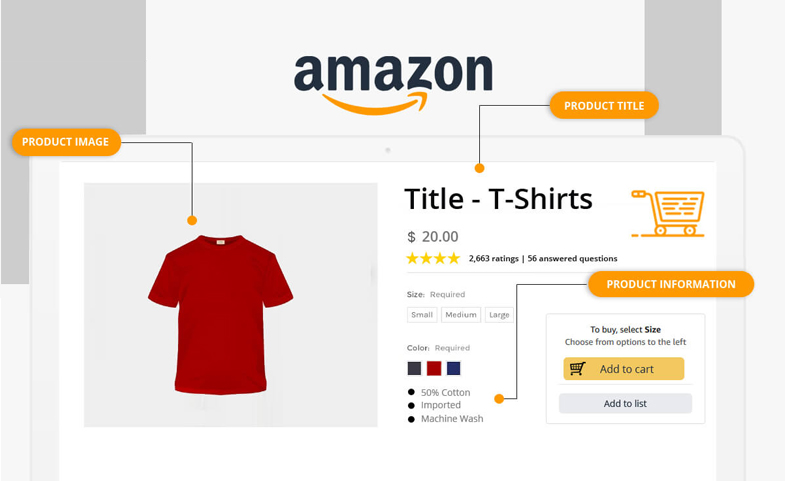Introduction
In the vast and ever-expanding universe of e-commerce, Amazon stands as a titan, connecting millions of buyers and sellers from around the world. At the heart of this digital marketplace lies the Amazon Catalog, an intricate and dynamic system that serves as the backbone of the platform. In this comprehensive guide, we will delve deep into the Amazon Catalog, demystifying its components, significance, and how it shapes the online shopping experience for both customers and sellers.
What is the Amazon Catalog?
The Amazon Catalog is essentially a massive database that houses detailed information about every product available on the platform. This catalog serves as the central repository for product listings, allowing Amazon to display and manage products effectively. The catalog encompasses an array of data, including product titles, descriptions, prices, images, reviews, and more.
Components of the Amazon Catalog
- Product Title: The title is the first thing customers see when searching for a product. It must be clear, concise, and accurately represent the item. Amazon has strict guidelines for titles to maintain consistency and aid discoverability.
- Product Description: This section provides a detailed overview of the product's features, specifications, and benefits. Well-crafted descriptions can influence buying decisions.
- Product Images: High-quality images are crucial for showcasing products. Amazon encourages sellers to provide multiple images from different angles to give customers a complete view.
- Pricing Information: Sellers set their product prices, which may vary due to factors like competition, demand, and shipping costs.
- Product Reviews: Customer reviews and ratings play a significant role in product visibility and trust-building. Positive reviews can boost sales, while negative ones may deter potential buyers.
- Product Variations: Many products come in different colors, sizes, or configurations. These variations are listed within the same product detail page.
- Stock Availability: Sellers need to manage their inventory and update listings to reflect product availability accurately.
- Keywords and Search Terms: Sellers use relevant keywords and search terms to ensure their products appear in relevant search results.
- Fulfillment Options: Sellers can choose to fulfill orders themselves or use Amazon's fulfillment services like FBA (Fulfillment by Amazon).
The Role of ASINs (Amazon Standard Identification Numbers)
Amazon assigns a unique ASIN to each product in its catalog. This alphanumeric identifier distinguishes products, even if they have the same title or brand. ASINs streamline product searches and provide a standardized way to reference items within the catalog.
How to create a good product catalog
Catalog is an effective way of showcasing your products well and acquiring a good customer base. Some of the effective ways of showcasing your products are
- Simple Page Title: A page title should consist of the product name, variations like color or size, and quantity if available. These details add more meaning to the product title and will be helpful in getting the customer interested in your product.
- Informative Product Descriptions: Include specific information like dimensions, units, material, care instructions, warranty information, and anything else that can help customers understand the product better.
- Sharp Product Images: Online customers do not have the liberty of touching and feeling the product before buying it. Images are the only way they can see the product. Therefore, it is important to have high-quality and sharp images.
- Answer FAQs: A catalog must also include frequently answered questions about the product.
The Impact of the Amazon Catalog on Sellers
For sellers, mastering the Amazon Catalog is essential for success on the platform. A well-optimized product listing can significantly impact visibility, conversions, and sales.
Here's how sellers can leverage the catalog:
- Optimized Listings: Crafting compelling titles and descriptions with relevant keywords can improve a product's discoverability.
- High-Quality Imagery: Investing in professional product photography helps products stand out and instills confidence in buyers.
- Competitive Pricing: Sellers must analyze pricing strategies to remain competitive in their niche.
- Inventory Management: Maintaining accurate stock levels and promptly updating listings prevents overselling or stockouts.
- Customer Engagement: Responding to customer reviews and inquiries fosters trust and demonstrates commitment to customer satisfaction.
The Amazon Catalog's Impact on Customers
For customers, the Amazon Catalog is the gateway to a vast array of products. It simplifies the shopping process in several ways:
- Extensive Selection: Shoppers can explore a wide range of products, brands, and sellers within a single platform.
- Product Information: Detailed product listings, including descriptions, images, and reviews, empower customers to make informed decisions.
- Search and Filtering: Robust search and filtering options help customers find precisely what they're looking for.
- Reviews and Ratings: Customer reviews and ratings provide valuable insights into product quality and satisfaction.
- Product Comparisons: Customers can easily compare similar products to find the best fit for their needs and budget.
Conclusion
The Amazon Catalog is the bedrock of the e-commerce giant, facilitating seamless interactions between buyers and sellers. Understanding its components and optimizing product listings is crucial for sellers looking to thrive on the platform. For customers, the catalog offers an unparalleled shopping experience, allowing them to explore, evaluate, and choose from a vast array of products. In the ever-evolving world of online retail, the Amazon Catalog remains an indispensable tool, shaping the way we shop in the digital age.


